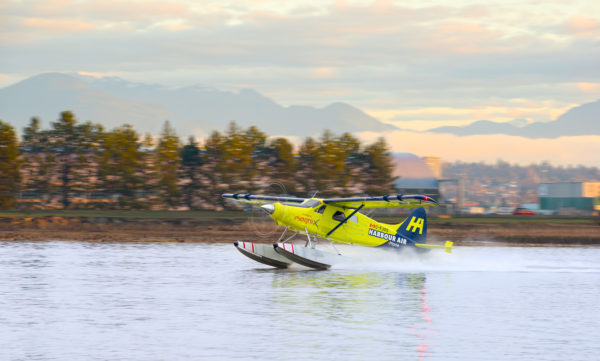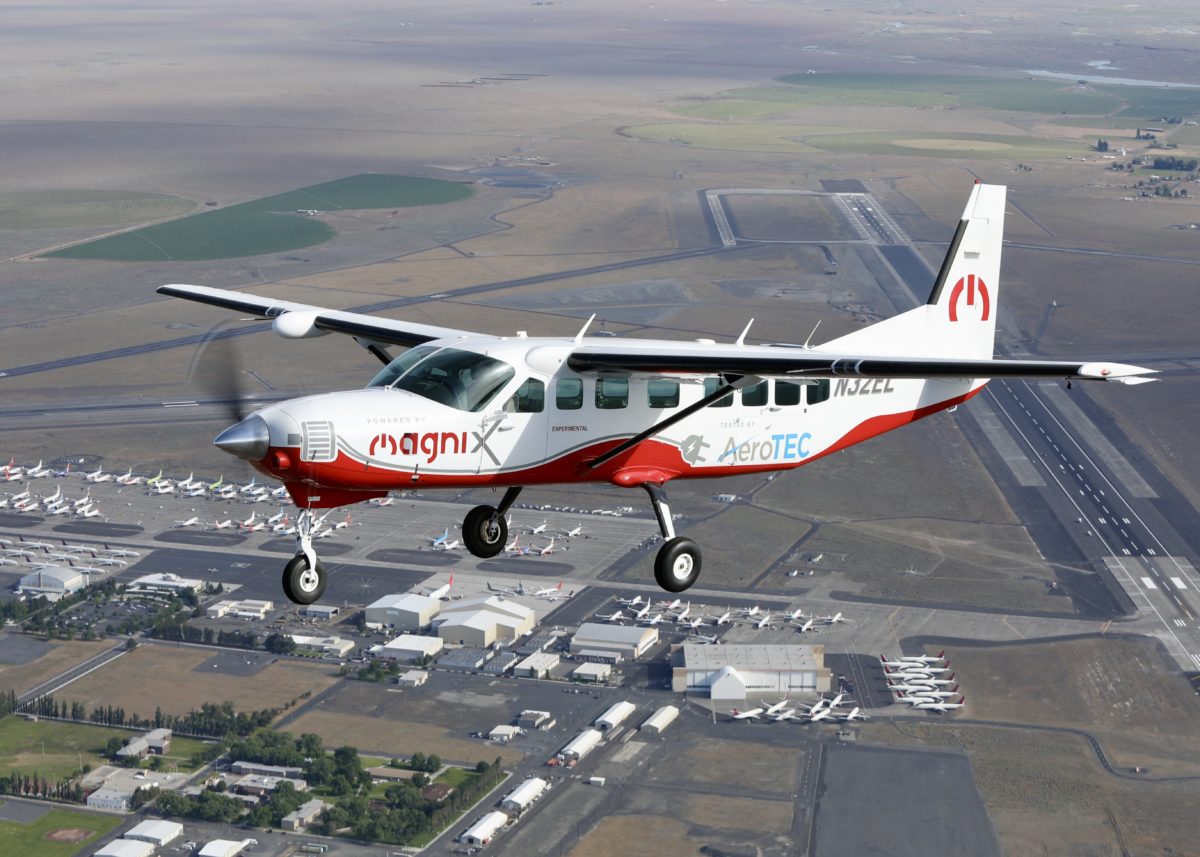No matter how keen we may be to resume travel, Covid-19 has likely dampened our enthusiasm for flying in confined spaces with hundreds of others. Touchdown, the nine-seater Cessna eCaravan, powered entirely by an electric motor engineered by magniX on the Gold Coast in Queensland, which on Friday made its maiden half-hour flight at Moses Lake, in Seattle in the US.
The great leap forward in electric propulsion for aviation comes, at a time, when “the drive to smaller aircraft, lower cost, more convenience and cleaner for the environment” are coinciding, Roei Ganzarski, CEO of magniX told the BBC in the wake of last week’s flight.
The eCaravan won’t get you from Perth to London, but magniX’s stated purpose has always been to connect communities with zero-emissions, low-cost flight, and Ganzarski expects the eCaravan to be in commercial use sometime in 2021.
Its successful half-hour, 160km test flight used less than US$6 worth of electricity, compared to a Cessna Caravan powered by conventional combustion engine which would have sucked up some US$300-400 worth of fuel. And Ganzarski points out that, as in electric vehicles, the motor requires very little maintenance compared to its gas-guzzling cousins.
Invented in Australia
At its Gold Coast facility back in 2017, magniX solved a number of challenges to designing an electric-powered aircraft motor with a single engineering breakthrough. It subsequently ran eight motors in rugged conditions, at all temperatures for more than 1,000 hours, to stress test their reliability. In late 2018, the magniX team began using the motor to turn aircraft propellers, before unplugging from the wall socket and demonstrating that propulsion capability based purely on battery power. “That was a very significant milestone,” Ganzarski told pv magazine early last year.

Image: ©Tim Barker / NOI Pictures - All rights reserved
With its 2017 breakthrough into aircraft capabilities, magniX established a second headquarters in Seattle, in the US, a global hub of aviation development. Seattle-based AeroTec modified the Cessna Caravan to fly under magniX electric propulsion.
Ganzarski’s thinking behind electrically powering traditional aircraft is that these aircraft frames are already certified by the US Federal Aviation Administration, which should advance certification of an e-model of the same aircraft.
Orchestrating industry revolution
Demonstrating a commercially viable electric aircraft, he told the BBC last week, is the only way to inspire battery companies to design their products specifically for aviation, pushing the envelope on weight and capacity/range. Conversely, he believes batteries designed for aviation will also spur aerospace companies to come up with more aircraft designed specifically for electric-powered flight.
The Israeli-designed Eviation Alice, for example, shows how the different weight and thrust of electric motors are enabling aircraft of revolutionary shape and configuration. Both magniX and Eviation are wholly owned by Singapore-based Clermont Group, which is headed by its founder, New Zealand-born billionaire businessman Richard Chandler.
Ganzarski told pv magazine last year, “If you were to take a by-design nine-passenger all-electric aircraft, you could with today’s batteries achieve something like 500 miles [800 km] in range… We’re working on both paths, because if we were only to work on new electric craft, the adoption into the industry would be much slower.”
Last December MagniX conducted a successful test flight with a modified de Havilland Canada DHC-2 Beaver seaplane powered by the same magniX 750-horsepower motor as has been fitted to the eCaravan.

Image: magniX
This year, MagniX was awarded the 2020 Fast Company Most Innovative Company in Energy, and was a finalist in the 2020 Fast Company World Changing Ideas in Transportation awards (the winner, Convoy, is a program developed to decrease emissions of trucking fleets by loading them more efficiently).
Reducing costs and revitalising regions with zero emissions
MagniX says 45% of all airline flights cover less than 800 km, while 5% of flights are sub-160 km, and it’s likely that commercial electric flights powered by magniX motors will first be offered in the UK, US or Europe, but Ganzarski offered an inspiring vision of what even short-range flights could mean for regional Australian towns:
“You could have phenomenal factories or businesses in these places that can’t currently sell their goods or can’t receive goods because the 4.5 to 6-hour truck drive that happens maybe once a week is just operatively prohibitive. If you could have an aircraft do that in 20, 40, 60 minutes and do it with zero emissions at a really low cost, and suddenly you’re really connecting these communities…”
MagniX asserts that up to 50% of airline operating costs are currently made up of fuel and engine maintenance, and that electrically powered flights will enable up to 80% reduction in overall costs per flight hour.
Just add solar rooftop PV to all regional airports and Tritium super-fast chargers to the infrastructure, and you have ingredients for job creation, and regional regeneration and reconnection in the wake of Covid-19. Simplistic, perhaps, but not out of the ballpark. And certainly not the only potential for electrically enabled flight.
Says Ganzarski, “One of the things we’re trying to do is not just make flying cheaper, but to make it so efficient and so low-cost from an operating perspective that new operating models could start up that will change the way we think today.”
This content is protected by copyright and may not be reused. If you want to cooperate with us and would like to reuse some of our content, please contact: editors@pv-magazine.com.









1 comment
By submitting this form you agree to pv magazine using your data for the purposes of publishing your comment.
Your personal data will only be disclosed or otherwise transmitted to third parties for the purposes of spam filtering or if this is necessary for technical maintenance of the website. Any other transfer to third parties will not take place unless this is justified on the basis of applicable data protection regulations or if pv magazine is legally obliged to do so.
You may revoke this consent at any time with effect for the future, in which case your personal data will be deleted immediately. Otherwise, your data will be deleted if pv magazine has processed your request or the purpose of data storage is fulfilled.
Further information on data privacy can be found in our Data Protection Policy.